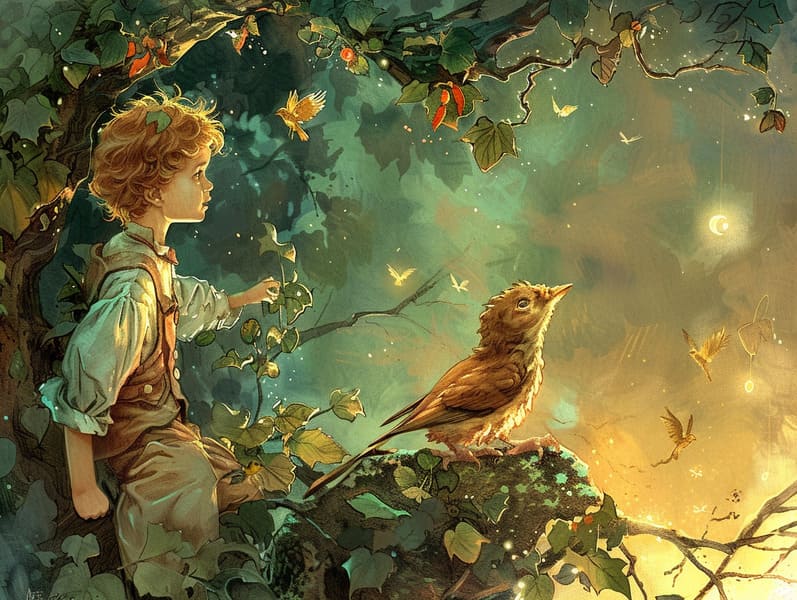The Evolution of Bedtime Fairy Tales with Their Invariable Grace.
The Evolution of Bedtime Fairy Tales with Their Invariable Grace.
Blog Article

Children's fairy tales have deep roots. These tales have been passed down from one generation to the next centuries before they were ever documented. They developed from a variety of traditions, including Western traditions. They were initially conveyed among elders, often carrying themes and messages mirroring the societal norms and beliefs of the time.
Jacob and Wilhelm Grimm, Jacob and Wilhelm, were among the first to compile and release many of these beloved tales. Their collection, "Grimm's Folk Tales," included narratives like "The Little Glass Slipper," "Little Brother and Little Sister," and "Snow White," which have since become essentials in the world of beloved fairy tales. Similarly, the Danish author's charming stories, such as "The Mermaid's Tale," and "The Little Duckling," have captured hearts worldwide, securing their place in the pantheon of timeless fairy tales.
Though they are centuries old, fairy tales remain as meaningful as ever, especially as nighttime stories for kids. These charming stories are now available in diverse formats, including vibrantly illustrated books, enchanting animations, and digital fairy tales.
Their ongoing significance can be linked to several magical reasons:
Crucial Morals: Ancient fairy tales often offer important moral lessons. Narratives like "The Boy Who Cried Wolf" teach the benefit of sincerity, while "The Hare and the Tortoise" show the virtues of tenacity and modesty. These narratives offer kids clear distinctions between virtue and vice, developing their moral compass in a mild yet profound way.
Kindness and Comprehension: Classic fairy tales frequently showcase beings facing obstacles and hardships, fostering audiences to identify with their struggles and rally behind their triumphs. For instance, "Beauty's Beast" shows us the value of seeing inner beauty to realize the true nature of a character, cultivating empathy and comprehension.
Cultural Insights: Many classic fairy tales are saturated in the cultural contexts from which they bloomed. Exploring these stories can provide enlightening views into different cultures, cultivating a sense of world appreciation and discernment.
Fantasy and Innovation: The enchanted elements in fairy tales—magical spells—activate children’s creative dreams. These narratives take readers to extraordinary realms, triggering creative thinking and a sense of magic that remains a lifetime.
Old fairy tales are not only alluring but also edifying. They serve as entrancing tools in nurturing various brain and heart skills in children. When old fairy tales are spoken, they strengthen communication skills by offering new phrases and elaborate sentence structures. This practice also advances listening skills and focus, as the young listen intently, prepared to see what happens next.
Furthermore, discussing the themes and characters of ancient fairy tales can nurture evaluative skills and critical thinking. Kids are educated to identify patterns, expect results, and get cause and effect. These get more info analyses also boost children speak out their thoughts and feelings, boosting their emotional intelligence.
In today’s electronic age, the abundance of online fairy tales has made these tales more acquirable than ever. Web-based platforms and mobile apps extend comprehensive collections of Grimm's fairy tales that can be browsed or heard anytime, anywhere. Fairy tales spoken are particularly prevalent, offering an interactive way for kids to delight in these whimsical stories. Spoken stories and spoken videos carry characters and settings to life, often augmented by captivating audio effects and harmonies that enrich the tale experience.
The lasting allure of ancient fairy tales lies in their ability to alter to current eras while staying true to their central values. Contemporary reimaginings of these tales often incorporate more diverse figures and modern settings, making them pertinent to today’s audience. However, the basic principles of heroism, benevolence, and fair play remain unchanged, continuing to strike a chord with children of all ages.
Classic fairy tales also offer a sense of assurance and knowability. They make available a well-structured narrative with a transparent beginning, middle, and end, often coming to a close with the settlement of conflicts and the triumph of good over evil. This predictability can be calming for kids, yielding a sense of unwaveringness in an fluid world.
Old fairy tales continue to enchant and educate new generations, maintaining their grandeur and value in modern society. As nighttime stories for kids, they render a perfect blend of fantasy and learning, encouraging moral values, empathy, and creativity. The proliferation of digital fairy tales and the commonness of fairy tales recited secure that these traditional narratives remain available to new generations.
By safeguarding and relating these fairy tales, we continue to appreciate the rich tapestry of tales and cultural heritage. Whether you are reading a artistically illustrated book, perusing a cyber library, or listening through an audiobook, the grandeur of popular fairy tales is always within reach. These stories illustrate of the unending magic of tales and its ability to link us across epochs and places.
Even if you are experiencing a richly illustrated book, seeing a internet library, or playing an read-aloud book, the mystique of ancient fairy tales is always within reach.
These tales remind us of the undying presence of narratives and its ability to gather us across time and space, forging a link that enchants and educates alike.